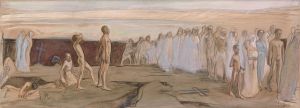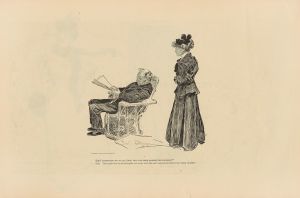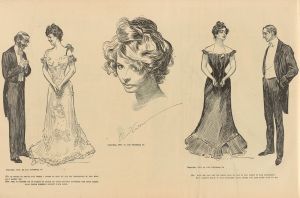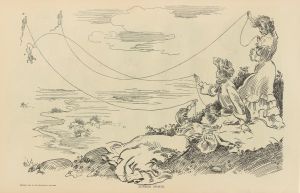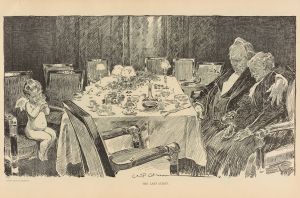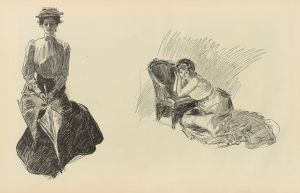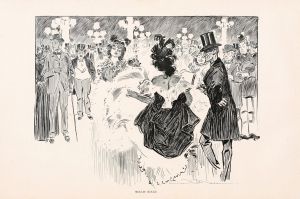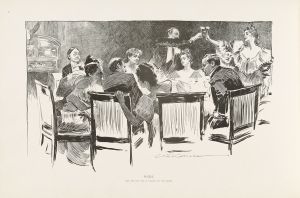
Life’s vaudeville. ‘I’ll be a sister to you’
A hand-painted replica of Charles Dana Gibson’s masterpiece Life’s vaudeville. ‘I’ll be a sister to you’, meticulously crafted by professional artists to capture the true essence of the original. Each piece is created with museum-quality canvas and rare mineral pigments, carefully painted by experienced artists with delicate brushstrokes and rich, layered colors to perfectly recreate the texture of the original artwork. Unlike machine-printed reproductions, this hand-painted version brings the painting to life, infused with the artist’s emotions and skill in every stroke. Whether for personal collection or home decoration, it instantly elevates the artistic atmosphere of any space.
Charles Dana Gibson was an influential American illustrator, best known for his creation of the "Gibson Girl," an iconic representation of the American woman at the turn of the 20th century. One of his notable works is the illustration titled "Life’s Vaudeville. ‘I’ll be a sister to you’," which captures the social dynamics and gender roles of its time with wit and insight.
Gibson was born on September 14, 1867, in Roxbury, Massachusetts. He studied at the Art Students League in New York City, where he honed his skills in illustration. His career took off in the 1890s when his work began appearing in popular magazines such as Life, Harper's Weekly, and Scribner's. Gibson's illustrations were characterized by their detailed line work and keen observation of social nuances.
"Life’s Vaudeville. ‘I’ll be a sister to you’" is one of Gibson's many illustrations that appeared in Life magazine, a publication known for its humor and satire. The illustration reflects Gibson's ability to comment on the social interactions between men and women during the late 19th and early 20th centuries. The phrase "I’ll be a sister to you" was a common expression used by women of the era to politely decline romantic advances, suggesting a platonic relationship instead.
In this particular illustration, Gibson employs his signature style to depict a scene that is both humorous and telling of the societal norms of the time. The characters are drawn with exaggerated expressions and postures, a technique Gibson often used to emphasize the comedic or ironic elements of a situation. The setting and attire of the characters are indicative of the vaudeville era, a time when theater and performance were popular forms of entertainment.
Gibson's work, including "Life’s Vaudeville. ‘I’ll be a sister to you’," played a significant role in shaping public perceptions of gender roles. The "Gibson Girl" became a cultural icon, representing the idealized American woman—independent, confident, and fashionable. This image was both aspirational and reflective of the changing roles of women in society, as they began to seek more autonomy and opportunities outside the domestic sphere.
Throughout his career, Gibson's illustrations captured the essence of American life with humor and insight. His work remains a valuable resource for understanding the cultural and social history of the United States during the late 19th and early 20th centuries. "Life’s Vaudeville. ‘I’ll be a sister to you’" is a testament to Gibson's talent for blending art with social commentary, making it a noteworthy piece in his extensive body of work.
Gibson continued to influence the world of illustration until his death on December 23, 1944. His legacy endures through his contributions to American art and culture, and his illustrations continue to be studied and appreciated for their artistic merit and historical significance.






